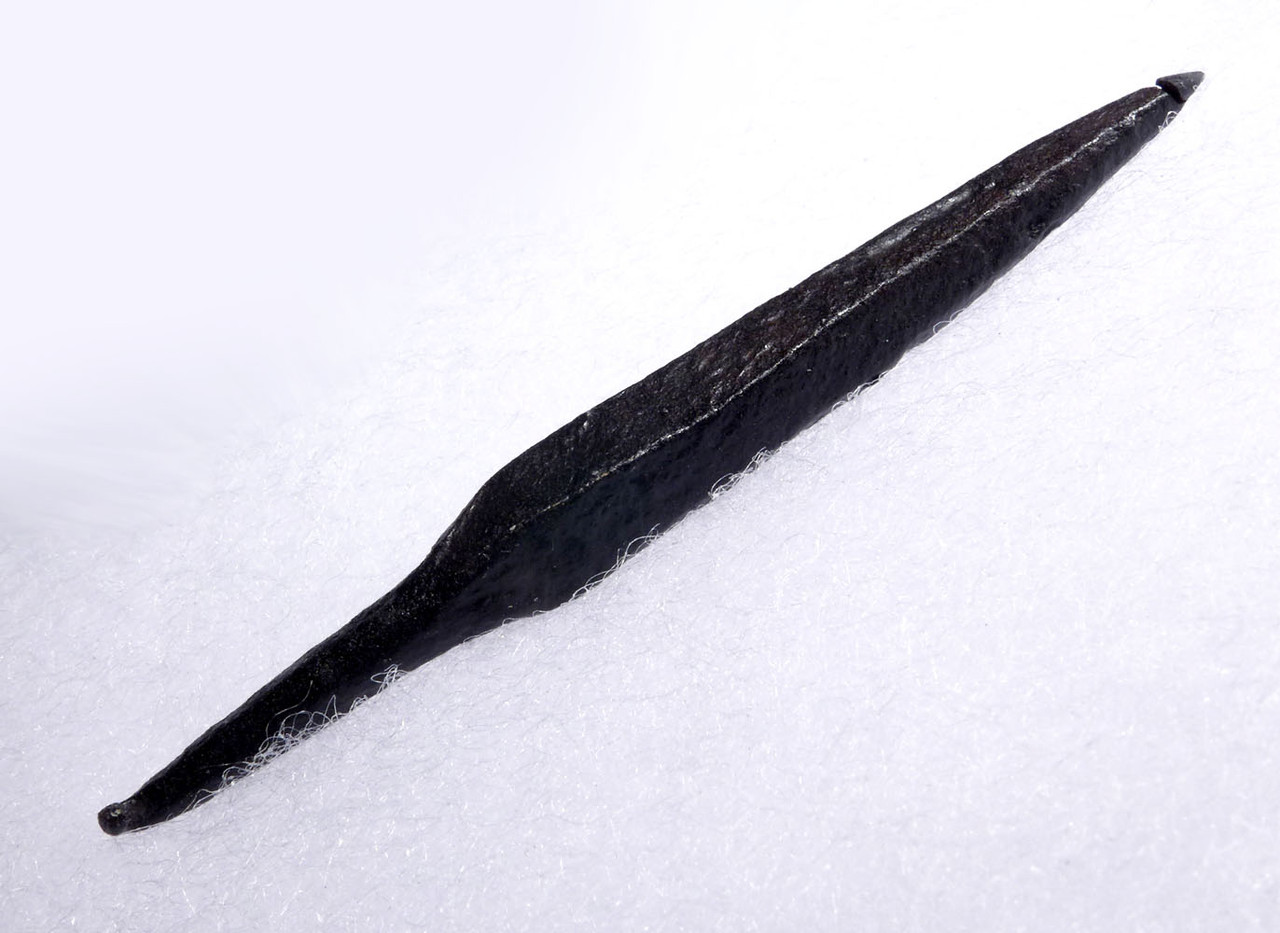Product Description
This rare iron arrowhead was used by Mongolian horseback archers who were once threatening Europe with terrifying raids of an effective Mongol Empire invasion during the 13th century A.D.. Villages and cities all across Europe, especially Eastern and Central Europe, were under the constant threat of destruction with lightning quick horseback attacks. At this point in history, armor was commonly used so their arrowheads were mostly designed for penetration in enemy armor, aided by the weight of solid iron and being of a narrow, elongated pyramidal design. The heavy weight of the robust design made them effective in piercing enemy armor, both leather and metal.
This is a very large and extremely fine example in exceptional preservation. It is of a FOUR-SIDED pyramidal design. It has a complete, intact tang and full body with original tip. Weapons and artifacts from the Mongol Empire are RARE from this often overlooked but important time in European history.
HISTORY
The Mongol Empire of the 13th and 14th centuries was the largest contiguous land empire in history. Originating in present-day Mongolia in East Asia, the Mongol Empire at its height stretched from the Sea of Japan to parts of Eastern Europe, extending northward into parts of the Arctic; eastward and southward into parts of the Indian subcontinent, attempted invasions of Southeast Asia, and conquered the Iranian Plateau; and westward as far as the Levant and the Carpathian Mountains.
The Mongol Empire emerged from the unification of several nomadic tribes in the Mongol homeland under the leadership of Temüjin, known by the more famous title of Genghis Khan (c. 1162–1227), whom a council proclaimed as the ruler of all Mongols in 1206. The empire grew rapidly under his rule and that of his descendants, who sent out invading armies in every direction. The vast transcontinental empire connected the East with the West, and the Pacific to the Mediterranean, in an enforced Pax Mongolica, allowing the exchange of trade, technologies, commodities, and ideologies across Eurasia.
From the 1220s into the 1240s, the Mongols conquered the Turkic states of Volga Bulgaria, Cumania and Iranian state of Alania, and various principalities in Eastern Europe. Following this, they began their invasion into Central Europe by launching a two-pronged invasion of then-fragmented Poland. Invasions also were launched into the Caucasus against the Kingdom of Georgia and the Chechens and Ingush, as well as into the Southeast Europe against Bulgaria, Croatia, and the Latin Empire. Their conquests integrated much of Eastern European territory into the empire of the Golden Horde. Warring European princes realized they had to cooperate in the face of a Mongol invasion, so local wars and conflicts were suspended in parts of central Europe, only to be resumed after the Mongols had withdrawn. After the initial invasions, subsequent raids and punitive expeditions continued into the late 13th century.
The Mongols were most famous for their horse archers, but troops armed with lances were equally skilled, and the Mongols recruited other military specialists from the lands they conquered. Forces under the command of the Mongol Empire were trained, organized, and equipped for mobility and speed. Mongol soldiers were more lightly armored than many of the armies they faced but were able to make up for it with maneuverability. Each Mongol warrior would usually travel with multiple horses, allowing him to quickly switch to a fresh mount as needed. In addition, soldiers of the Mongol army functioned independently of supply lines, considerably speeding up army movement. Skillful use of couriers enabled the leaders of these armies to maintain contact with each other.
 US DOLLAR
US DOLLAR
 EURO
EURO
 AUSTRALIAN DOLLAR
AUSTRALIAN DOLLAR
 CANADIAN DOLLAR
CANADIAN DOLLAR
 POUND STERLING
POUND STERLING










